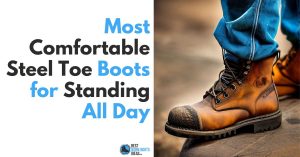Steel Toe vs Soft Toe Protective Footwear: Learn All You Need to Know
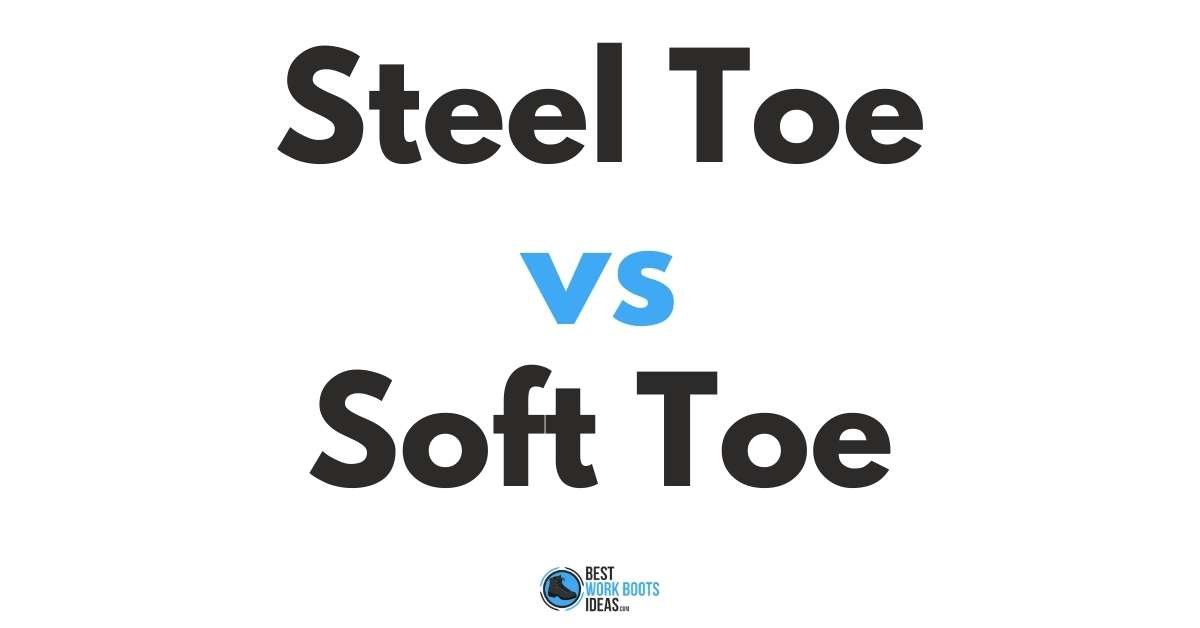
It is true that many boots have a similar look, and at a quick glance you might assume that they deliver the same features.
Especially when it comes to differentiating between a safety toe boot.
Nothing could be further from the truth!
It is for that reason that I will cover the differences between steel toe and soft toe boots.
I’m a guy that has worn both of these types of boots.
In the times I worked for a mason, I went with a steel toe pair.
Further down the road I worked in and established a business doing residential construction, during that period I often used soft toe boots.
The point is, there isn’t a right or wrong in this debate, there’s just time and place.
It’s not important to take a side in this boot debate.
Doing so would be like telling someone to choose which tool they liked the best, it’s not a logical position to put someone in
What is important is that you know the right tool for the job.
Whether you’re willing to admit it or not, going into work properly prepared is absolutely part of the job.
We often act as though it’s only what we can get done at the job that determines our value as a worker.
Rarely do we ask, what are the choices I make that increase or decrease my abilities in that department.
It’s hard to see getting dressed at home as your first important work-related decision, but it absolutely is.
Ever leave your gloves at home because “it’s not gonna’ be that cold, I’ll be fine,” and spend half the day rubbing your hands for warmth?
I know I have!
So, at that, let’s get into breaking down the differences between steel toe and soft toe work boots.
Contents
Weight
Steel toe boots are generally the heaviest amongst general work boots.
Being outfitted with a toe cap of a very dense metal, this makes perfect sense.
Soft toe boots are lighter on average than steel, or any safety boots.
This makes wearing them a far more comfortable experience.
This isn’t to say you can’t find a pair of steel toes lighter than soft toes, or the other way around.
There are many factors that go into how much a boot weighs.
Some include the size of the outsole, the height of the boot, and the thickness of the uppers and padding.
Toe Box Safety
Foot protection is probably the most obvious difference when you compare steel toe vs soft toe footwear.
There is no comparison in this category, steel toes are far safer than soft toes.
Steel toe and composite toe footwear is required to pass the ASTM F2413 testing specifications.
This looks at areas such as impact and compression.
The ASTM (American Society for Testing and Materials) is the organization that OSHA bases its footwear requirements on.
This test ensures that the toe on the boot in question can withstand an 75 lb object falling from 18 inches, or compression from a 2500 pound object.
Usually the boots in question exceed the requirements.
Next time you go online to buy steel toe footwear, look out for the I/75 and C/75 which reflects the point made above.
Grainger does a good job of summarizing the ASTM standards and their relationship to OSHA
Soft toe boots can’t compete with steel toes in this category.
They lack the necessary toe cap that keeps you safe from falling or crushing objects.
Even so, you can find soft toe footwear that has many if not all of the safety features you’ll find in steel toe boots.
It would not surprise me to find some soft toes with slip resistant, electric dissipating outsoles, and chemical resistant.
Don’t assume that a soft toe can’t be loaded with other features.
A common example is electrical hazard and waterproof features.
Breathability
Breathability is a department in which soft toe boots are going to excel where steel comes up a bit short.
If your priorities lean towards getting fresh air to your toes, skip the steel and go soft.
Steel is not a material known for its porous nature, and this instance is no exception.
A steel toe will definitely limit venting and will create a pocket of collected heat and moisture.
Sometimes a material fact is in fact due to the material! On the other end, soft toe shoes lack the impermeable steel barrier, so your foot will be able to breath a little bit better.
Soft or steel toe, you can find boots in both categories with breathable and/or moisture wicking liners that will make all the difference in the world.
If it was just about breathability, I would say that you’re better off with a soft toe.
That said, there are usually more than one factor that goes into the boot selection process, so let’s continue on.
A Comfortable Work Boot
Soft toe boots will generally be more comfortable than their steel counterpart.
The lack of the toe cap allows for greater flexibility in the boot (especially in the toe box area) and allows for you to walk closer to how you would in a sneaker.
It’s also a safe expectation that because soft toe boots aren’t able to be marketed as safety shoes, they will add comfort features.
This allows the companies to justify asking a similar price to the steel toes.
This isn’t to say that you can’t find comfortable steel toe boots, you absolutely can.
There’s no rule that says because a boot has a steel toe, it can’t have a padded tongue and collar.
There are steel toe boots with comfortable and functional designs to absorb shock and the like.
I’m just speaking about generalities here.
I always encourage people to dive into the specs and features of whatever boot they’re looking at.
Go to a store, ask questions.
If there’s not much the salesperson can say about a particular boot, it’s probably because there’s not much to say about it.
The same applies online when you’re reading a product spec.
Price
There’s not a huge difference in price between soft and steel toe work boots.
You’ll find a range between brands, as well as between different models of the same brand.
The additional features you might find in a boot better predict the cost than the style of boot itself.
You’re capable of finding both great and terrible boots within each category.
Don’t assume that a familiar brand guarantees a quality product.
Who Would Benefit From Steel Toe Boots?
Anyone working in heavy industry or anywhere that OSHA requirements are something that’s taken seriously.
You should consult firstly with your line manager or HR department to understand the PPE requirements.
If you work for yourself, then maybe get in contact with your industry trade body.
I would generally take a more cautious approach.
Even if your work doesn’t meet either of the conditions above, you still might be a person that should grab a pair of steel toe boots.
As I noted in the very beginning of this article, when working as a mason I wore steel toe boots.
For what reasons?
There was always something that I could drop, or something that could be dropped on me that would instantly break my toes.
There was always some machine being wheeled or driven around that could turn my foot into a pancake.
Even if your work doesn’t sound as dangerous as that, consider what your days look like.
A residential plumber doesn’t take out cast iron sinks every day, but when they do, they absolutely want to keep their toes from being crushed.
For days like those, you may want to have an alternative pair of steel toe boots that you can wear when required.
Again, this depends on what your day will look like.
Who Would Benefit From Soft Toe Boots?
Workers that put a premium on mobility and flexibility would benefit from a pair of soft toe boots.
In this article I went into great detail about the conditions I experienced as a residential contractor.
These conditions demanded I be sure-footed every day.
To list some professions: painters, gardeners, cabinet makers, and most of all….electricians!
Electricians, linemen, welders and similar occupations are definitely among those who need steel-free boots.
Due to their constant and continuous exposure to electricity, steel doesn’t work for them.
In some instances, people in these professions will still be required by their employer to have OSHA approved safety boots.
For those professionals, I recommend you find a pair of composite toe cap boots which will meet your needs.
Summary
| Feature | Steel Toe | Soft Toe |
|---|---|---|
| Weight | Heavy | Lighter |
| Safety | Excellent | Very low |
| Breathability | Generally worse | Generally better |
| Comfort | Worse | Better |
| Price | Equally priced | Equally priced |
This is not one of those articles where I’m going to declare a winner and say you should always buy that style boot.
Both steel and soft toe boots have their applications and times to shine.
What’s more important is being able to recognize the different instances in which you would want one or the other.
I think of it as being able to recognize the proper tool for the job.
If you’re a carpenter, you learn about the different types of saw blades and when you need each.
If you’re a plumber, you don’t just say “I need to seal this,” you learn how different sealants are used for iron, copper, or pvc.
The same ideas apply to boots!
I will say this, I recommend that anyone who regularly wears boots would benefit from having a pair of each.
Even if you discover that one pair spends more time on the shoe rack, it’s extremely convenient to have it available.
It’s great to say “sure, no problem” when a friend asks for help, or the boss gives notice for an unexpected type of week.
You can just grab the lesser used of the two styles, and instantly you’re prepared for the surprise work day.


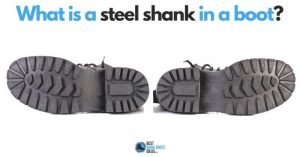
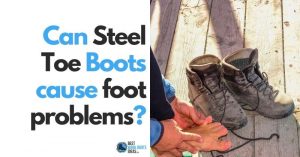
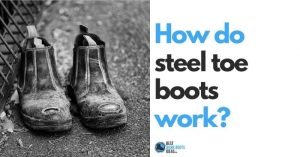
![Cement Construction Boots: Your Complete [FREE] Guide](https://www.bestworkbootsideas.com/wp-content/uploads/2021/06/cement-construction-boots-featured-image-300x157.jpg)
